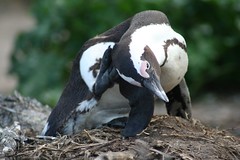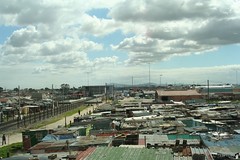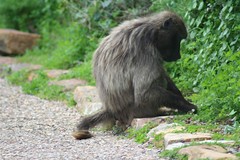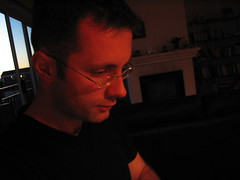As we started our long drive from the Tsitsikamma National Park back to Cape Town, I became aware of a certain travel weariness that had crept up on me. For three weeks we had moved fast from place to place, following a loose but busy schedule, sleeping one day here, two days there, changing landscapes and hotel rooms often, like a couple of drifters living in their motor home. The land had become familiar to us; we knew the grocery stores, the banks, the fast foods, and the parking customs but we didn’t settle in any corner long enough to develop the comfortable illusion that we had a home of our own. Familiarity with a place you visit creates the yearning to stay, but in the usual vacationer it is closely associated with the thought – good or bad – of returning home. We didn’t have a home to get back to, and we weren’t going to stay either, so I felt that it was time to move on, not just to another town and another hotel room, but to the next stage of our trip. But it was too early for this restlessness: we had to get to Cape Town first, and it was going to take us a few more days. This feeling of inadequacy had struck me a bit too early.
I spent the following few days under the ominous shadow of this thought, which made them a little dull and unexciting. I had already decided we had to leave, and this diminished the beauty of the places that we saw during those last days, although these places were in no way inferior to the ones we had already visited. Or it may have been the weather, I don’t know . . .

Click on pic to see slideshow
or here to access the set
We got to Hermanus, the self-crowned whale-watching capital of the world, but didn’t see many whales, because we were too lazy to wait for hours on the bluff, looking at the sea through our binoculars, waiting for something to happen. We saw them in the end, but they were just gray patches floating on water, blowing steam and showing their tails once in a while as they dived. Alas, there was none of that spectacular breaching stuff that you see on the Discovery Channel. So I guess it was the disappointment that the whales didn’t come to parade themselves in front of my camera that made us spend most of our time getting busy with the local delicious food and good wine.
Next, it was Simonstown on the cape peninsula, a little town of rich, beautiful terraced houses overlooking the sea, part of a gorgeous stretch of narrow coastland running around the nail-shaped peninsula that extends into the Atlantic, south of Cape Town. There was not much to see here besides the penguins at Boulder’s beach. The whole town fell asleep around seven, so we had our dinner extravaganza in an almost empty restaurant.
On the day we drove back to Cape Town we took a ride through the Table Mountain national park and visited South Point – the southern tip of the peninsula, which also holds the Cape of Good Hope. In the visitor center parking, I was attacked by a baboon that came from nowhere and wanted to steal the granola bar that I had just started to eat. I caught the baboon by the throat, pinned him to the ground and yelled at him: “You want by granola bar, you filthy baboon? Then come and get it if you can! Take this! And this!” I said, as I punched him in his dog-ugly face . . . Ok, it wasn’t quite like that. It climbed on the roof of the car as I was standing by it, and made a dash for my hand, but I jumped back. It seemed to want to come after me, so I threw the bar over its head and the baboon went after it and later was chased away by the park rangers armed with long sticks.

Click on pic to see slideshow
or here to access the set
Finally, back in Cape Town (after another short detour to the local wineries), we landed at the same noisy hotel on Long street where we had stayed two weeks before. The next day, we took an organized tour to visit one of the most visible legacies of apartheid: the townships – the suburban conglomerates of dilapidated houses, wooden shacks and tin-houses where the black population had been forced to settle when the country was ruled by a regime that considered skin color as the most important guiding principle. The tour was a very educative experience, but I could not shake off a lingering feeling of guilt for having paid money to see the misery and poverty of others.
On the last day, as I returned our rental car, I finally felt free. Something else was going to begin soon. Better or worse, I didn’t know, but I was eager for it.






No comments:
Post a Comment